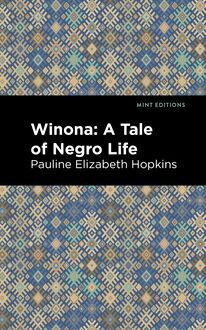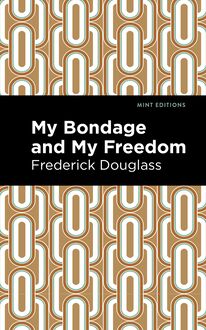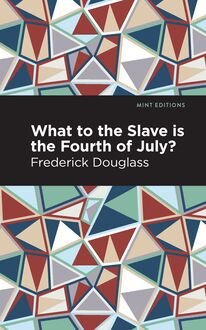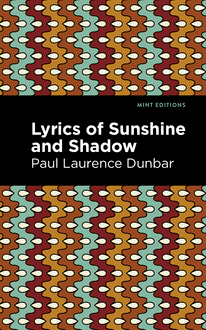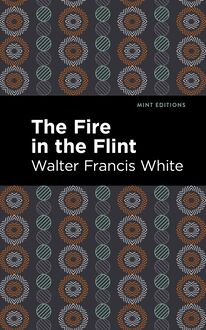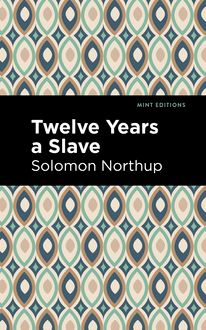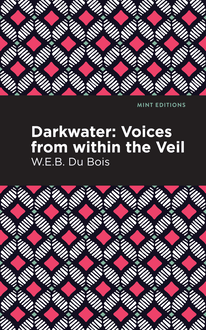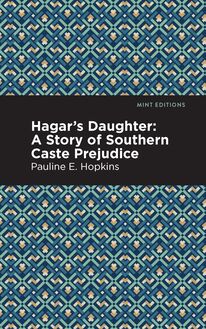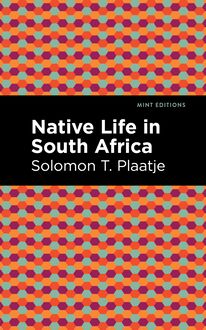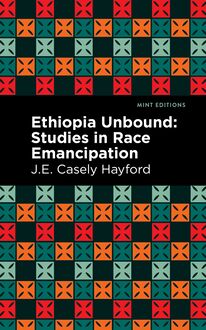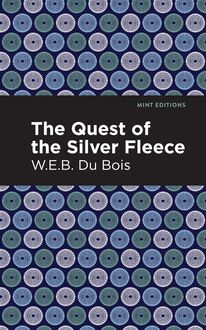-
 Univers
Univers
-
 Ebooks
Ebooks
-
 Livres audio
Livres audio
-
 Presse
Presse
-
 Podcasts
Podcasts
-
 BD
BD
-
 Documents
Documents
-
- Cours
- Révisions
- Ressources pédagogiques
- Sciences de l’éducation
- Manuels scolaires
- Langues
- Travaux de classe
- Annales de BEP
- Etudes supérieures
- Maternelle et primaire
- Fiches de lecture
- Orientation scolaire
- Méthodologie
- Corrigés de devoir
- Annales d’examens et concours
- Annales du bac
- Annales du brevet
- Rapports de stage
La lecture à portée de main
Vous pourrez modifier la taille du texte de cet ouvrage
Découvre YouScribe en t'inscrivant gratuitement
Je m'inscrisDécouvre YouScribe en t'inscrivant gratuitement
Je m'inscrisEn savoir plus
Vous pourrez modifier la taille du texte de cet ouvrage
En savoir plus

Description
The Book of American Negro Poetry (1922) is an anthology by James Weldon Johnson. Alongside some of his own poems, Johnson includes the work of such legendary artists as Paul Laurence Dunbar, W. E. B. Du Bois, Jessie Fauset, and Georgia Douglas Johnson. Carefully selected and supported with a masterful preface by Johnson, the poems herein reflect a range of voices, styles, and subjects drawn from tradition and experience alike. In his preface, Johnson justifies his anthology by identifying its vital purpose: “The public, generally speaking, does not know that there are American Negro poets—to supply this lack of information is, alone, a work worthy of somebody's effort.” And the effort was his. In his poem “O Black and Unknown Bards,” he asks “O black and unknown bards of long ago, / How came your lips to touch the sacred fire?” Recognizing the need for a reconciliation between the long tradition of black culture and the overwhelming erasure of his own contemporary artists, Johnson highlights the efforts of those poets who “Within [their] dark-kept soul[s], burst into song.” Like Johnson himself, many of the poets included in The Book of American Negro Poetry work in a variety of voices, moving expertly from dialect to the traditional lyric in poems that harness the spirit of song and sermon alike. To borrow the words of Joseph S. Cotter Jr., a poet included in this anthology, these poems are elemental in their power to rejuvenate an exclusive national culture, and they “Rise and fall triumphant / Over every thing.” With a beautifully designed cover and professionally typeset manuscript, this edition of James Weldon Johnson’s The Book of American Negro Poetry is a classic of African American literature reimagined for modern readers.
Sujets
Informations
| Publié par | Mint Editions |
| Date de parution | 21 mai 2021 |
| Nombre de lectures | 1 |
| EAN13 | 9781513287423 |
| Langue | English |
| Poids de l'ouvrage | 2 Mo |
Informations légales : prix de location à la page 0,0500€. Cette information est donnée uniquement à titre indicatif conformément à la législation en vigueur.
Extrait
The Book of American Negro Poetry
James Weldon Johnson
The Book of American Negro Poetry was first published in 1922.
This edition published by Mint Editions 2021.
ISBN 9781513282404 | E-ISBN 9781513287423
Published by Mint Editions ®
minteditionbooks.com
Publishing Director: Jennifer Newens
Design & Production: Rachel Lopez Metzger
Project Manager: Micaela Clark
Typesetting: Westchester Publishing Services
C ONTENTS P REFACE P AUL L AURENCE D UNBAR A N EGRO L OVE S ONG L ITTLE B ROWN B ABY S HIPS T HAT P ASS IN THE N IGHT L OVER’S L ANE T HE D EBT T HE H AUNTED O AK W HEN DE C O’N P ONE’S H OT A D EATH S ONG J AMES E DWIN C AMPBELL N EGRO S ERENADE D E C UNJAH M AN U NCLE E PH’S B ANJO S ONG O L’ D OC’ H YAR W HEN O L’ S IS’ J UDY P RAY C OMPENSATION J AMES D . C ORROTHERS A T THE C LOSED G ATE OF J USTICE P AUL L AURENCE D UNBAR T HE N EGRO S INGER T HE R OAD TO THE B OW I N THE M ATTER OF T WO M EN A N I NDIGNATION D INNER D REAM AND THE S ONG D ANIEL W EBSTER D AVIS ’ W EH D OWN S OUF H OG M EAT W ILLIAM H . A . M OORE D USK S ONG I T W AS N OT F ATE W . E . B URGHARDT D U B OIS A L ITANY OF A TLANTA G EORGE M ARION M C C LELLAN D OGWOOD B LOSSOMS A B UTTERFLY IN C HURCH T HE H ILLS OF S EWANEE T HE F EET OF J UDAS W ILLIAM S TANLEY B RAITHWAITE S ANDY S TAR AND W ILLIE G EE S ANDY S TAR I. Sculptured Worship II. Laughing It Out III. Exit IV. The Way V. Onus Probandi D EL C ASCAR T URN M E TO M Y Y ELLOW L EAVES I RONIC: LL . D . S CINTILLA S IC V ITA R HAPSODY G EORGE R EGINALD M ARGETSON S TANZAS FROM THE F LEDGLING B ARD AND THE P OETRY S OCIETY J AMES W ELDON J OHNSON O B LACK AND U NKNOWN B ARDS S ENCE Y OU W ENT A WAY T HE C REATION T HE W HITE W ITCH M OTHER N IGHT O S OUTHLAND! B ROTHERS F IFTY Y EARS (1863–1913) J OHN W ESLEY H OLLOWAY M ISS M ELERLEE C ALLING THE D OCTOR T HE C ORN S ONG B LACK M AMMIES L ESLIE P INCKNEY H ILL T USKEGEE C HRISTMAS AT M ELROSE S UMMER M AGIC T HE T EACHER E DWARD S MYTH J ONES A S ONG OF T HANKS R AY G . D ANDRIDGE T IME TO D IE ’ I TTLE T OUZLE H EAD Z ALKA P EETRUZA S PRIN’ F EVAH D E D RUM M AJAH F ENTON J OHNSON C HILDREN OF THE S UN T HE N EW D AY T IRED T HE B ANJO P LAYER T HE S CARLET W OMAN R . N ATHANIEL D ETT T HE R UBINSTEIN S TACCATO E TUDE G EORGIA D OUGLAS J OHNSON T HE H EART OF A W OMAN Y OUTH L OST I LLUSIONS I W ANT TO D IE W HILE Y OU L OVE M E W ELT M Y L ITTLE D REAMS C LAUDE M C K AY T HE L YNCHING I F W E M UST D IE T O THE W HITE F IENDS T HE H ARLEM D ANCER H ARLEM S HADOWS A FTER THE W INTER S PRING IN N EW H AMPSHIRE T HE T IRED W ORKER T HE B ARRIER T O O . E . A . F LAME- H EART T WO-AN’- S IX J OSEPH S . C OTTER, J R. A P RAYER A ND W HAT S HALL Y OU S AY? I S I T B ECAUSE I AM B LACK? T HE B AND OF G IDEON R AIN M USIC S UPPLICATION R OSCOE C . J AMISON T HE N EGRO S OLDIERS J ESSIE F AUSET L A V IE C ’EST LA V IE C HRISTMAS E VE IN F RANCE D EAD F IRES O RIFLAMME O BLIVION A NNE S PENCER B EFORE THE F EAST OF S HUSHAN A T THE C ARNIVAL T HE W IFE- W OMAN T RANSLATION D UNBAR A LEX R OGERS W HY A DAM S INNED T HE R AIN S ONG W AVERLEY T URNER C ARMICHAEL K EEP M E, J ESUS, K EEP M E W INTER I S C OMING A LICE D UNBAR- N ELSON S ONNET C HARLES B ERTRAM J OHNSON A L ITTLE C ABIN N EGRO P OETS O TTO L ELAND B OHANAN T HE D AWN’S A WAKE! T HE W ASHER- W OMAN T HEODORE H ENRY S HACKLEFORD T HE B IG B ELL IN Z ION L UCIAN B . W ATKINS S TAR OF E THIOPIA T WO P OINTS OF V IEW T O O UR F RIENDS B ENJAMIN B RAWLEY M Y H ERO C HAUCER J OSHUA H ENRY J ONES, J R. T O A S KULL A PPENDIX. P LÁCIDO’S S ONNET TO HIS M OTHER D ESPIDA A M I M ADRE F AREWELL TO M Y M OTHER P LÁCIDO’S F AREWELL TO HIS M OTHER B IOGRAPHICAL I NDEX OF A UTHORS
P REFACE
There is, perhaps, a better excuse for giving an Anthology of American Negro Poetry to the public than can be offered for many of the anthologies that have recently been issued. The public, generally speaking, does not know that there are American Negro poets—to supply this lack of information is, alone, a work worthy of somebody’s effort.
Moreover, the matter of Negro poets and the production of literature by the colored people in this country involves more than supplying information that is lacking. It is a matter which has a direct bearing on the most vital of American problems.
A people may become great through many means, but there is only one measure by which its greatness is recognized and acknowledged. The final measure of the greatness of all peoples is the amount and standard of the literature and art they have produced. The world does not know that a people is great until that people produces great literature and art. No people that has produced great literature and art has ever been looked upon by the world as distinctly inferior.
The status of the Negro in the United States’ is more a question of national mental attitude toward the race than of actual conditions. And nothing will do more to change that mental attitude and raise his status than a demonstration of intellectual parity by the Negro through the production of literature and art.
Is there likelihood that the American Negro will be able to do this? There is, for the good reason that he possesses the innate powers. He has the emotional endowment, the originality and artistic conception, and, what is more important, the power of creating that which has universal appeal and influence.
I make here what may appear to be a more startling statement by saying that the Negro has already proved the possession of these powers by being the creator of the only things artistic that have yet sprung from American soil and been universally acknowledged as distinctive American products.
These creations by the American Negro may be summed up under four heads. The first two are the Uncle Remus stories, which were collected by Joel Chandler Harris, and the “spirituals” or slave songs, to which the Fisk Jubilee Singers made the public and the musicians of both the United States and Europe listen. The Uncle Remus stories constitute the greatest body of folklore that America has produced, and the “spirituals” the greatest body of folk-song. I shall speak of the “spirituals” later because they are more than folk-songs, for in them the Negro sounded the depths, if he did not scale the heights, of music.
The other two creations are the Cakewalk and ragtime. We do not need to go very far back to remember when cakewalking was the rage in the United States, Europe and South America. Society in this country and royalty abroad spent time in practicing the intricate steps. Paris pronounced it the “poetry of motion.” The popularity of the cakewalk passed away but its influence remained. The influence can be seen to-day on any American stage where there is dancing.
The influence which the Negro has exercised on the art of dancing in this country has been almost absolute. For generations the “buck and wing” and the “stop-time” dances, which are strictly Negro, have been familiar to American theatre audiences. A few years ago the public discovered the “turkey trot,” the “eagle rock,” “ballin’ the jack,” and several other varieties that started the modern dance craze. These dances were quickly followed by the “tango,” a dance originated by the Negroes of Cuba and later transplanted to South America. (This fact is attested by no less authority than Vincente Blasco Iba ñ ez in his “Four Horsemen of the Apocalypse.”) Half the floor space in the country was then turned over to dancing, and highly paid exponents sprang up everywhere. The most noted, Mr. Vernon Castle, and, by the way, an Englishman, never danced except to the music of a colored band, and he never failed to state to his audiences that most of his dances had long been done by “your colored people,” as he put it.
Any one who witnesses a musical production in which there is dancing cannot fail to notice the Negro stamp on all the movements; a stamp which even the great vogue of Russian dances that swept the country about the time of the popular dance craze could not affect. That peculiar swaying of the shoulders which you see done everywhere by the blond girls of the chorus is nothing more than a movement from the Negro dance referred to above, the “eagle rock.” Occasionally the movement takes on a suggestion of the, now outlawed, “shimmy.”
As for Ragtime, I go straight to the statement that it is the one artistic production by which America is known the world over. It has been all-conquering. Everywhere it is hailed as “American music.”
For a dozen years or so there has been a steady tendency to divorce Ragtime from the Negro; in fact, to take from him the credit of having originated it. Probably the younger people of the present generation do not know that Ragtime is of Negro origin. The change wrought in Ragtime and the way in which it is accepted by the country have been brought about chiefly through the change which has gradually been made in the words and stories accompanying the music. Once the text of all Ragtime songs was written in Negro dialect, and was about Negroes in the cabin or in the cotton field or on the levee or at a jubilee or on Sixth Avenue or at a ball, and about their love affairs. To-day, only a small proportion of Ragtime songs relate at all to the Negro. The truth is, Ragtime is now national rather than racial. But that does not abolish in any way the claim of the American Negro as its originator.
Ragtime music was originated by colored piano players in the questionable resorts of St. Louis, Memphis, and other Mississippi River towns. These men did not know any more about the theory of music than they did about the theory of the universe. They were guided by their natural musical instinct and talent, but above all by the Negro’s extraordinary sense of rhythm. Any one who is familiar with Ragtime may note that its chief charm is not in melody, but in rhythms. These players often improvised crude and, at times, vulgar words to fit the music.
-
 Univers
Univers
-
 Ebooks
Ebooks
-
 Livres audio
Livres audio
-
 Presse
Presse
-
 Podcasts
Podcasts
-
 BD
BD
-
 Documents
Documents
-
Jeunesse
-
Littérature
-
Ressources professionnelles
-
Santé et bien-être
-
Savoirs
-
Education
-
Loisirs et hobbies
-
Art, musique et cinéma
-
Actualité et débat de société
-
Jeunesse
-
Littérature
-
Ressources professionnelles
-
Santé et bien-être
-
Savoirs
-
Education
-
Loisirs et hobbies
-
Art, musique et cinéma
-
Actualité et débat de société
-
Actualités
-
Lifestyle
-
Presse jeunesse
-
Presse professionnelle
-
Pratique
-
Presse sportive
-
Presse internationale
-
Culture & Médias
-
Action et Aventures
-
Science-fiction et Fantasy
-
Société
-
Jeunesse
-
Littérature
-
Ressources professionnelles
-
Santé et bien-être
-
Savoirs
-
Education
-
Loisirs et hobbies
-
Art, musique et cinéma
-
Actualité et débat de société
- Cours
- Révisions
- Ressources pédagogiques
- Sciences de l’éducation
- Manuels scolaires
- Langues
- Travaux de classe
- Annales de BEP
- Etudes supérieures
- Maternelle et primaire
- Fiches de lecture
- Orientation scolaire
- Méthodologie
- Corrigés de devoir
- Annales d’examens et concours
- Annales du bac
- Annales du brevet
- Rapports de stage

